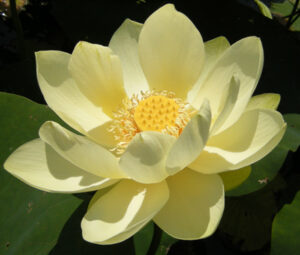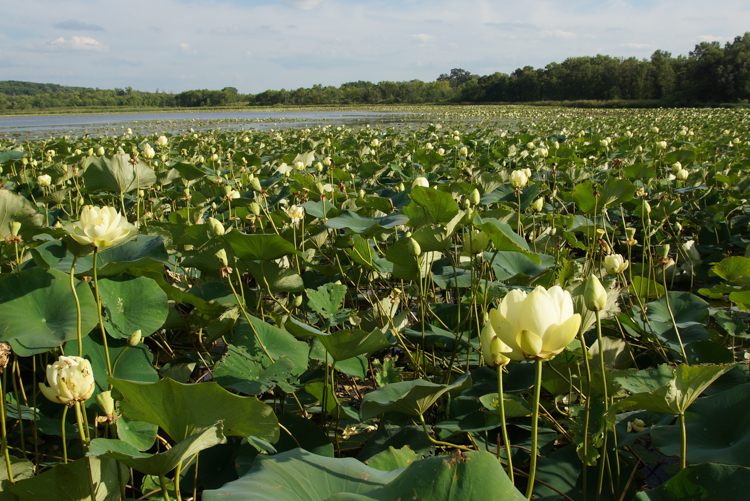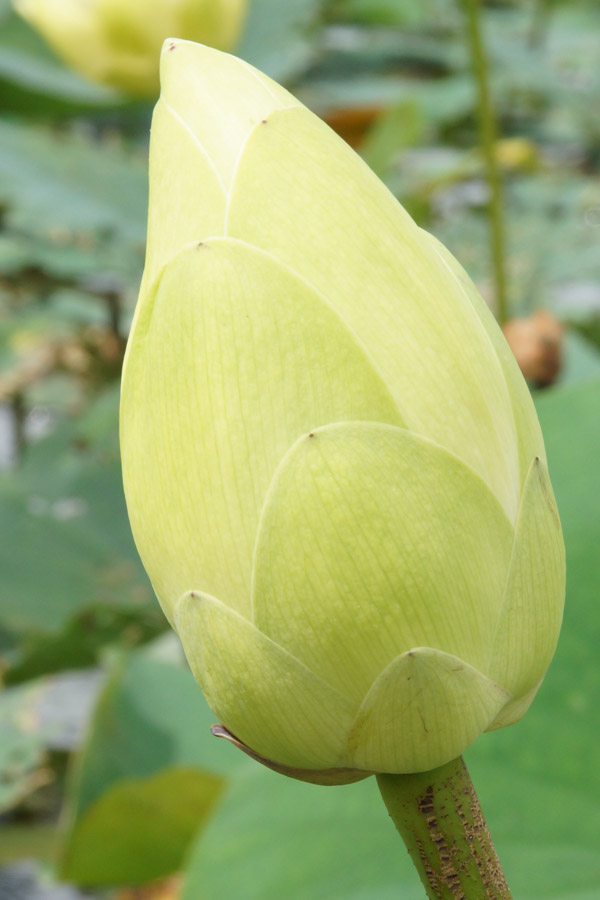
Other name: American Lotus-Lily
Family: Lotus, Nelumbonaceae
Wetland Indicator Status: OBL
American Lotus (Nelumbo lutea) is one of the most beautiful and amazing aquatic plants around, in almost every way. The pale yellow or off-white flowers are huge, 6 – 10 inches, with a yellow center. Large beds of the plant are a pretty sight, but when they are in full bloom and the wind blows off them, the smell is amazing. I find the smell of a lotus bed almost as pleasing as their beautiful flowers. After their flowers mature, they form an interesting looking seed head that is often used in dried flower arrangements. The huge 11- 28 inch leaves float on the water’s surface in a floating leaf stage, but they also have an emergent stage where they rise above the water. The leaves are interesting. They are highly waterproof and collect water. When water pools on top of the leaves, the gasses released from the root system bubble up. On a hot day in a lotus bed, the sound of bubbling can be heard all around you.
One of the negative aspects of American Lotus, and to some degree, other floating-leaf plants, is that they can form vast, dense stands; their leaves can block light and cause dissolved oxygen levels to dip to levels dangerous to fish. For this reason, the interiors of beds are avoided by most gamefish, while at the same time, the fish may congregate around the edge of the bed. Increasing lotus may be a sign of declining water quality, as their floating leaf and emergent behavior helps them cope with turbidity. The expansion of lotus in some areas, like along the Mississippi River, has been attributed to artificially stabilized water levels. I think water quality issues have caused increases in lotus populations. In Lake Puckaway, these aquatic plants have been expanding into submergent plant beds as well as beds of Stiff Arrowhead and bulrushes. The Stiff Arrowhead and submergent plants are not being shaded out and killed by American Lotus in some areas. This needs to be monitored closely to see if lotus will require some limited control to save habitats with higher fish and wildlife values that are already declining in many areas. While they can be damaging at times, a lotus bed offshore can act as a wave break allowing other aquatic vegetation to take hold and persist.

Lotus has had some value to humans in the past, other than being pleasing to the eyes. The tubers are said to be tasty baked, and the leaves are also eaten before they unfurl. The seeds of American Lotus are acorn size nutlets and have been used in the stews and soups of Native Americans. Even though many tribes used them, it was often as a survival food. I have no direct experience consuming this wild plant and cannot say whether they are safe to eat or if they are legal to collect in your area. Collect and consume at your own risk.

